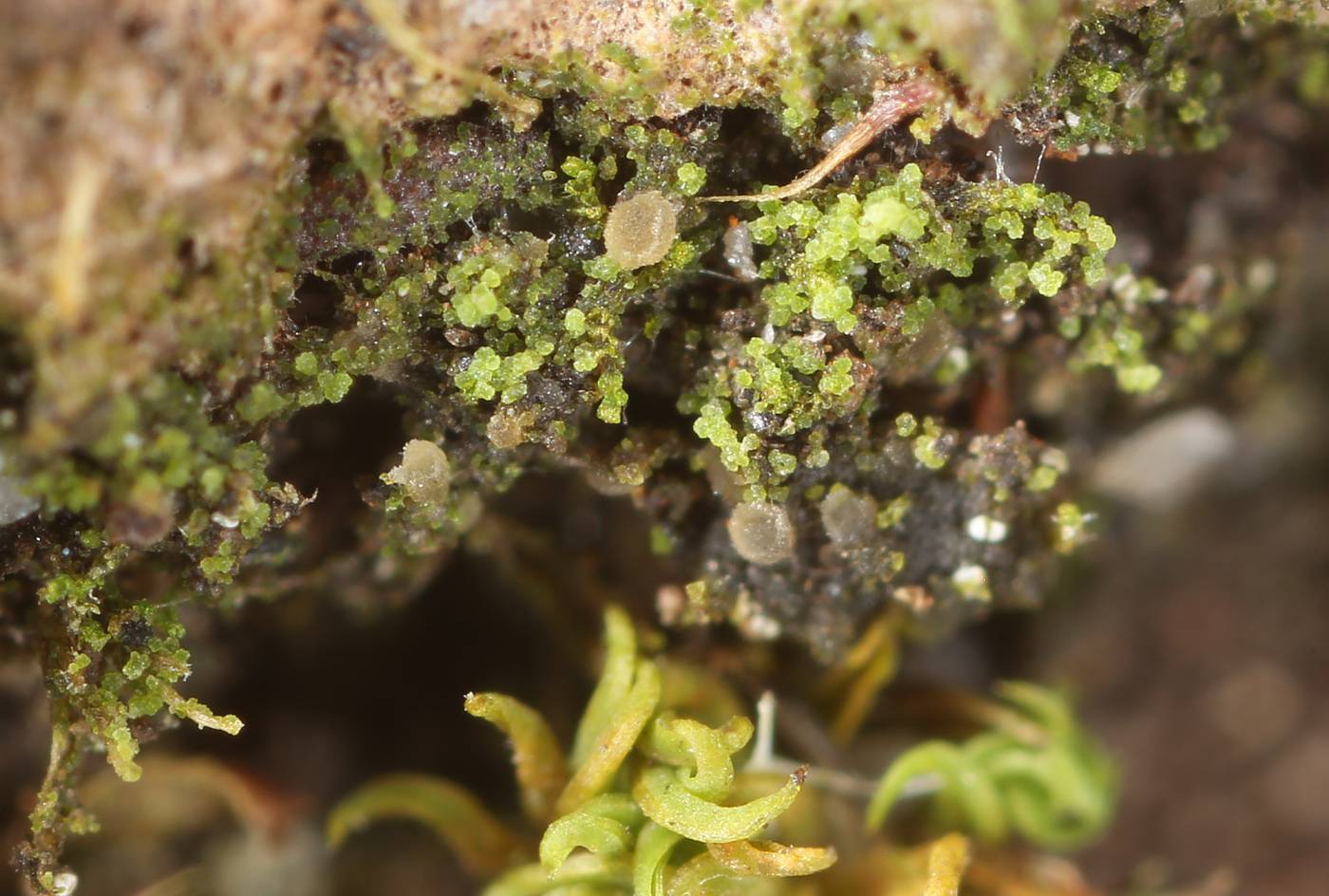A species with relatively high apothecia constricted at the base. It is similar to V. stipitata but has finely granulose yellowish thallus composed of scattered goniocysts and better developed paraphyses (Chambers & Purvis 2009).
It is a typical ephemeral toxicity-tolerant lichen. It tolerates higher amounts of heavy metals in the substrate and is usually found in urbanized, mainly heavily polluted industrial landscapes. In the Czech Republic, the species has occasionally been collected at lower elevations on anthropogenic stands, such as sludge ponds, spoil piles, railroads or quarries. Otherwise, it is also known from plant debris below zinc-coated highway barriers.
Literature: Palice Z. & Soldán Z. (2004): Lichen and bryophyte species diversity on toxic substrates in the abandoned sedimentation basins of Chvaletice and Bukovina. – In: Kovář P. [ed.], Natural recovery of human-made deposits in landscape (biotic interactions and ore/ash-slag artificial ecosystems), p. 200–221, Academia, Praha. Chambers S. P. & Purvis O. W. (2009): Vezdaea Tscherm.-Woess & Poelt (1976). – In: Smith C. W., Aptroot A., Coppins B. J., Fletcher A., Gilbert O. L., James P. W. & Wolseley P. A. [eds], The lichens of Great Britain and Ireland, p. 958–961, British Lichen Society, London.
taxonomic classification:Ascomycota → Lichinomycetes → Vezdaeales → Vezdaeaceae → Vezdaea
Red List (Liška & Palice 2010):DD – data deficient
Red List (Malíček 2023):C3 – endangered
Occurrence in the Czech Republic
All records: 28, confirmed 24. One click on a selected square displays particular record(s), including their source(s).
